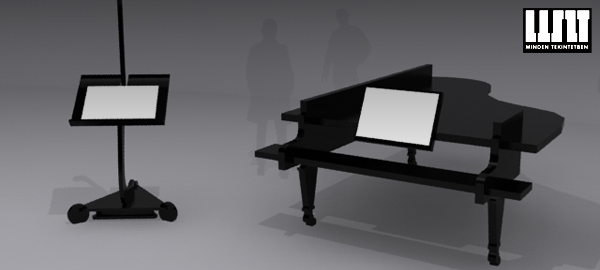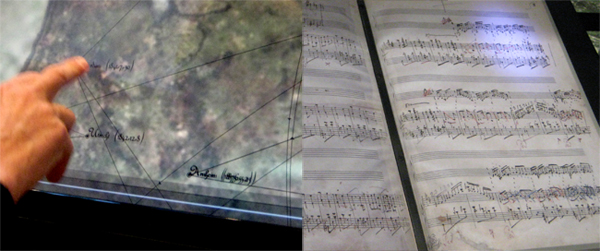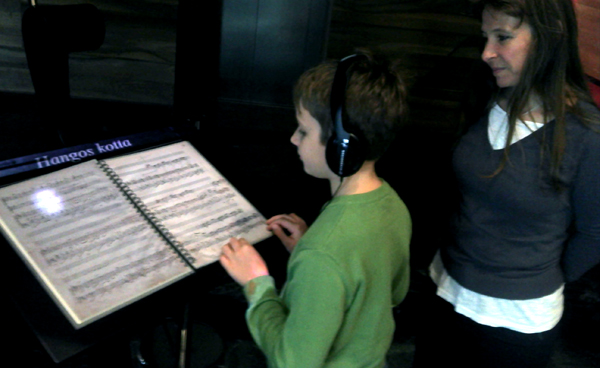| Liszt Series in the Palace of Arts |
|
2011 is the 200th anniversary of the birth of the great musician and pianist Ferenc Liszt. The Hungarian Palace of Arts is giving several tributes through the whole year for this occasion. As we are taking part in the project, instead of revisiting the well known facts and pieces from the master we were focusing on the actual experiments one can feel while listening to a musical piece or getting detailed and comparable information on an interesting artist. Thus we ended up with the Reactive score: people are invited to read and control the score while listening to the corresponding piece of music. Also a visualization project (Journeys of Liszt) is helping understand the great amount of physical movements Liszt made in his time: he travelled incredibly large distances via short periods of time. The two interactive installations are using cutting edge technology (multitouch screen, radio frequency identification sensors) to create unique experience for the visitors.
Reactive Score from binaura on Vimeo.
JOURNEYS OF LISZT The interface is based on a custom built interactive zooming map that contains all the time periods and corresponding main cities and villages that Liszt met during his travels around Europe. The amount of time, the distance and the several diverse locations shape a path of a truly international, open minded author.
REACTIVE SCORE A linear piano song made nonlinear by turning the pages of the score. The projected shapes and information are mapped to the note’s original position on the printed paper, so people can follow the score and the music easily.
The virtual content is mixed with the actual printed paper that can bring several layers of meaning to the score by augmenting its properties. The page turning interaction is made with RFID sensors: the passive tags are embedded in the papers of the score, the table is equipped with some receivers. Therefore the system can adjust the playback position based on the listeners' interaction using a custom made software. Thus visualization and the sound playback is synched to the interaction, people can follow and understand both basic musical notation and observe decisions and error corrections on the facsimile that is handwritten by Liszt himself.
Participants
József Mácsai – music advisor
|







